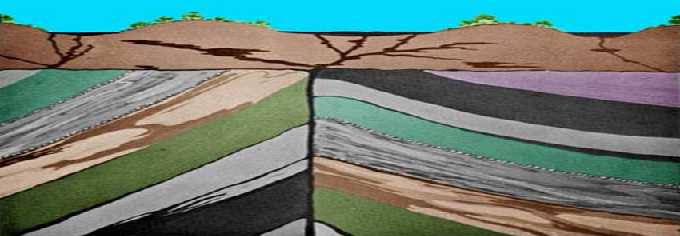Geology
 The
first and foremost interest in the La Brea tar pits were for its paleontological
potential. With such excavation for the fossil recovery, the geology housing
the fossils was completely ignored, and it is only of late (1970's and
on) that the geology of La Brea was taken into consideration. Once the
general geology was determined, it dismissed some of the myths as to how
the tar pits were formed, and gave clear evidence as to how the tar penetrates
into the sediments and rocks.
The
first and foremost interest in the La Brea tar pits were for its paleontological
potential. With such excavation for the fossil recovery, the geology housing
the fossils was completely ignored, and it is only of late (1970's and
on) that the geology of La Brea was taken into consideration. Once the
general geology was determined, it dismissed some of the myths as to how
the tar pits were formed, and gave clear evidence as to how the tar penetrates
into the sediments and rocks.
There are layers of gravel, sand, and
clay which were laid down by ancient streams or rivers. Faulting within
the rocks below the La Brea area , have opened cracks where the heat and
pressure within the earth, has forced the petroleum up through these cracks.
This petroleum penetrates the permeable layers of sand and gravel within
the earth. Some faults have produced fissures which carries the tar to
the surface. The asphaltic substance pools at the surface and tends to
stay in low-lying areas, such as stream beds or depressions in the landscape.



 The
first and foremost interest in the La Brea tar pits were for its paleontological
potential. With such excavation for the fossil recovery, the geology housing
the fossils was completely ignored, and it is only of late (1970's and
on) that the geology of La Brea was taken into consideration. Once the
general geology was determined, it dismissed some of the myths as to how
the tar pits were formed, and gave clear evidence as to how the tar penetrates
into the sediments and rocks.
The
first and foremost interest in the La Brea tar pits were for its paleontological
potential. With such excavation for the fossil recovery, the geology housing
the fossils was completely ignored, and it is only of late (1970's and
on) that the geology of La Brea was taken into consideration. Once the
general geology was determined, it dismissed some of the myths as to how
the tar pits were formed, and gave clear evidence as to how the tar penetrates
into the sediments and rocks. 

